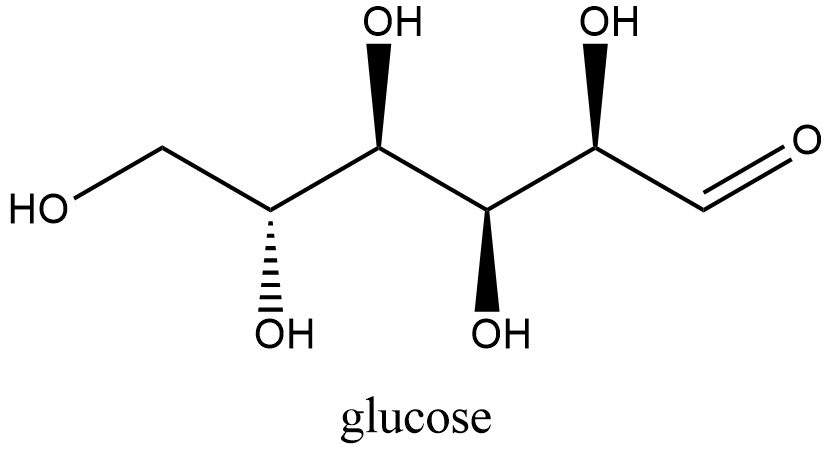
Which of the following polymers of glucose is stored by animals?
A. Cellulose
B. Amylose
C. Amylopectin
D. Glycogen
Answer
506.7k+ views
Hint: Animals gain their energy in the form of glucose. Glucose is broken down by mitochondria into
Complete step by step answer:
Animals get energy in the form of glucose from food. Mitochondria break down glucose into energy. However, this is done only when the body requires energy. The amount of glucose that is broken down is strictly equal to the amount of energy required. So, once the energy requirement is met, no further breakdown of glucose occurs. The glucose now left, has to be stored by the body in a harmless form.
Glycogen is a polysaccharide of glucose and is a primary form of storage. It has numerous glucose units linked together by alpha acetal linkage. Glycogen is stored in the liver and muscles and when the body again requires it can be broken down to glucose and the energy requirements of the body can be fulfilled.
Structure of glucose is –

Hence, option D is correct.
Additional information:
Glycogen is stored in the liver and it releases it in the form of glucose when required. This also helps in maintaining constant sugar levels in the body. In some amounts glycogen is also stored in cardiac and muscle cells and is used as a n energy source. Brain cells called astrocytes also store glycogen.
Note: Animals store glucose in the form of glycogen whereas plants store it in the form of starch. Amylose is a crystallizable form of starch and amylopectin is a non-crystallizable one. Cellulose is the basic content of plant cell walls.
Complete step by step answer:
Animals get energy in the form of glucose from food. Mitochondria break down glucose into energy. However, this is done only when the body requires energy. The amount of glucose that is broken down is strictly equal to the amount of energy required. So, once the energy requirement is met, no further breakdown of glucose occurs. The glucose now left, has to be stored by the body in a harmless form.
Glycogen is a polysaccharide of glucose and is a primary form of storage. It has numerous glucose units linked together by alpha acetal linkage. Glycogen is stored in the liver and muscles and when the body again requires it can be broken down to glucose and the energy requirements of the body can be fulfilled.
Structure of glucose is –

Hence, option D is correct.
Additional information:
Glycogen is stored in the liver and it releases it in the form of glucose when required. This also helps in maintaining constant sugar levels in the body. In some amounts glycogen is also stored in cardiac and muscle cells and is used as a n energy source. Brain cells called astrocytes also store glycogen.
Note: Animals store glucose in the form of glycogen whereas plants store it in the form of starch. Amylose is a crystallizable form of starch and amylopectin is a non-crystallizable one. Cellulose is the basic content of plant cell walls.
Latest Vedantu courses for you
Grade 10 | MAHARASHTRABOARD | SCHOOL | English
Vedantu 10 Maharashtra Pro Lite (2025-26)
School Full course for MAHARASHTRABOARD students
₹33,300 per year
Recently Updated Pages
Master Class 11 Economics: Engaging Questions & Answers for Success

Master Class 11 Business Studies: Engaging Questions & Answers for Success

Master Class 11 Accountancy: Engaging Questions & Answers for Success

Master Class 11 English: Engaging Questions & Answers for Success

Master Class 11 Computer Science: Engaging Questions & Answers for Success

Master Class 11 Maths: Engaging Questions & Answers for Success

Trending doubts
State and prove Bernoullis theorem class 11 physics CBSE

1 ton equals to A 100 kg B 1000 kg C 10 kg D 10000 class 11 physics CBSE

State the laws of reflection of light

One Metric ton is equal to kg A 10000 B 1000 C 100 class 11 physics CBSE

Difference Between Prokaryotic Cells and Eukaryotic Cells

1 Quintal is equal to a 110 kg b 10 kg c 100kg d 1000 class 11 physics CBSE




